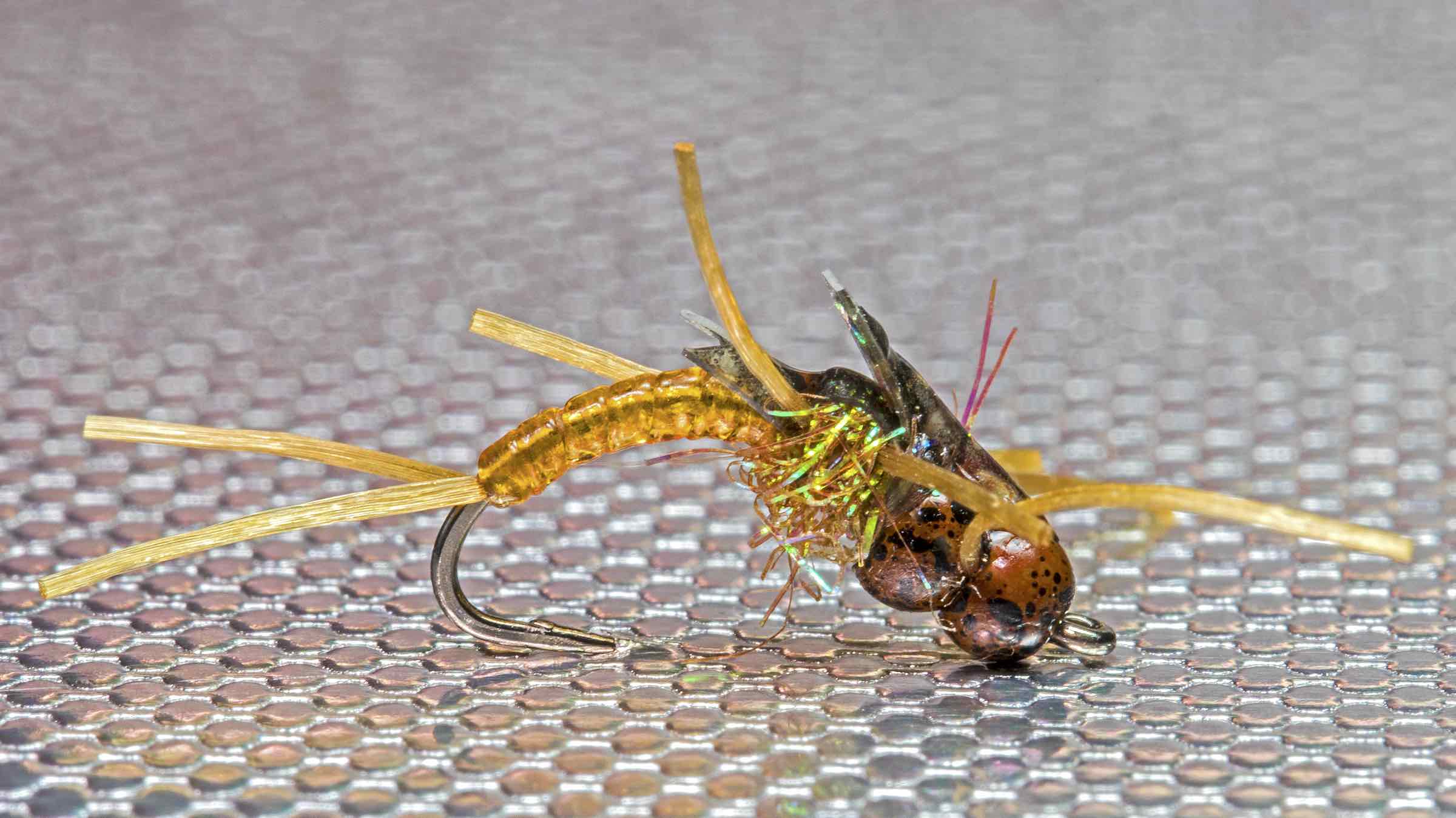
by Bob Reece
When discussions surrounding stoneflies arise, images of gargantuan invertebrates come to mind. The large end of the plecopteran spectrum does play a role in the annual feeding cycle of trout. However, the more petite species and developmental stages of stoneflies should not be overlooked.
As nymphs grow, they shed their exoskeletons. These developmental stages are referred to as instars. The number of instars varies among species, from 12 to 23. As a result, there are different sizes of nymphs present during the year in the freestone streams and rivers they inhabit.
In late spring and early summer the increased flows of runoff provide enough energy to detach even the largest nymphs from the rocky substrate. This increased flow is often accompanied by a decline in water clarity. These two factors create an ideal environment for larger-profile nymph patterns. The increased weight of these artificial bugs helps get them to depth in higher flows, while their superior silhouette helps make them more visible. This window of ideal conditions is productive, yet makes up a small part of the annual aquatic food cycle.
Prior to and following runoff, the volume and velocity of the water is lower and the clarity higher. This combination creates a more suitable environment for presenting stonefly nymphs in smaller sizes. While large stonefly nymphs are still present in the substrate, their abundance in the moving water column drops due to the reduction in subsurface velocity. The smaller species and lesser instars are at a greater risk of being stripped from their holds than the big nymphs, due to their smaller size and lesser strength.
It was for this larger window of conditions that I created the Stepchild Stone. I wanted a pattern that would accurately match the structural and behavioural profile of smaller developing stoneflies. The foundation this of this pattern is its behavioural profile. Stonefly nymphs are not effective swimmers, and when knocked free by the current often assume a hunched or curled position. This action reduces their overall surface area and helps expedite their descent back to the stream bottom. The Stepchild Stone is tied on the Gamakatsu C12U hook. The shape of this hook creates a drastically hunched appearance in the fly, mimicking the behaviour of the naturals. In addition, the sturdy construction and wide gap helps to ensure that it hooks and holds fish.
In a further effort to match behavioural traits, I used MFC Sexi Floss for the tail, legs and antennae. The supple flexibility of this material allows it to crawl with life in the water. Its transparency and flat profile provide an accurate imitation of the naturals. That same element of transparency is present in the stretch tubing that is used for the abdomen. Complimenting this is the reflective quality of the Ice Dub used for the thorax. This synthetic dubbing radiates a mottled array of colours that are visible through the transparent wing cases of natural bustard Thin Skin.
While small in size, the Stepchild Stone is not lacking in weight. Its duel tungsten beads provide the mass needed for a rapid descent to the desired depth. Tactical UV Resin overlays the beads and wing cases. The fly’s sink rate is aided by the intentionally thin abdomen which offers less resistance as the fly drops through the water column.
When fishing this pattern I usually use it as the bottom fly in an indicator or tight-line setup. I have also had significant success using it as a dropper below large foam terrestrial patterns in late summer and early fall. Regardless of the application, I always attach the Stepchild Stone with a non-slip loop-knot. This provides exceptional strength and allows the fly to move freely in the current. Click here to watch tying video.

